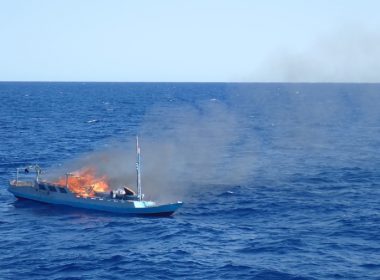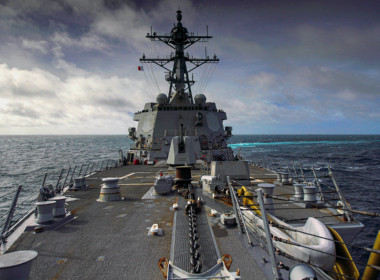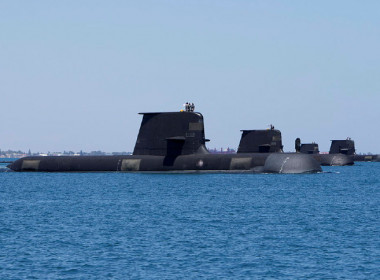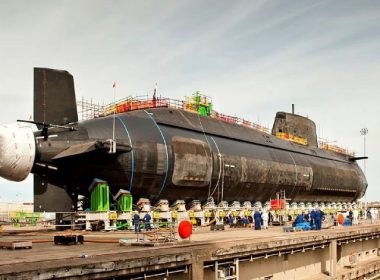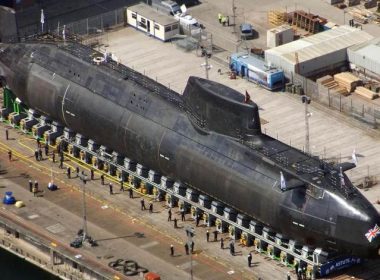OPINION | Australia and deterrence: Dazed and confused

Of all the problems confronting the nuclear-powered submarine (SSN) component of AUKUS, perhaps the most significant, yet relatively unremarked upon, concerns the question of how the submarines will contribute to deterrence.
The tenor of some recent commentary betrays confusion about what deterrence is and how we can make it credible.
The need for clarity about deterrence is necessary because, since the government’s 2020 Defence Strategic Update, deterrence has returned to the forefront of Australian defence and strategic policy as both a concept to animate defence capabilities and an objective of national policy.
On the surface, the answer to the question “What is deterrence?” is straightforward: to use all one’s military and non-military resources and capabilities to alter an adversary’s calculus about the benefits and costs of using coercion, including military force.
But the process of trying to deter an adversary is complex. To begin with, capabilities are needed; otherwise there is no way to threaten a response.
And there must be the will to use those capabilities; otherwise the threat is simply a bluff. To deter thus requires both capability and intent.
“Even if Australia was to acquire submarines on the timelines envisaged by the ‘optimal pathway’, there remains little clarity about how it intends to use them.”
In recent national debate about defence and strategic policy, however, there appears to be confusion over these components of deterrence.
A misconception has emerged that, just by concluding the AUKUS agreement and undertaking to acquire SSNs, Australia has achieved some degree of deterrence vis-à-vis China. Symptomatic of this view is the assertion that, while provision of SSNs to Australia is about capability, it is also about signalling to China that deep-seated US relationships in the region matter and should cause Beijing to think twice about its aggressive activities.
But it is now clear that Australia will lack any SSN capability well into the 2030s due to the significant constraints facing US Navy shipyards and changes in the Pentagon’s 2024-25 budget, undermining the credibility of any deterrent signalling.
More significantly, even if Australia was to acquire SSNs on the timelines envisaged by the “optimal pathway”, there remains little clarity about how it intends to use them. There is no doubt that the government sees the SSNs as central to Australia’s ability to deter, but on the central question of the strategy for which SSNs are needed, confusion reigns.
The 2023 Defence Strategic Review recommended that the ADF adopt a strategy of deterrence by denial, which it defines as a defensive approach designed to “deny an adversary freedom of action to militarily coerce Australia and to operate against Australia without being held at risk”.
Yet the question of how SSNs contribute to a strategy of denial remains under-specified. The Defence Strategic Review simply notes that such an acquisition would be “key to effecting a strategy of denial and in the provision of anti-submarine warfare and long-range strike options”.
It never addresses the issue of what types of actions, and in which geographical contexts, the government envisages SSNs playing such a function.
What role, for instance, could Australia’s future SSNs realistically play in the types of Taiwan scenarios – from a Chinese blockade to outright invasion – envisaged by both Pentagon and US think tank wargamers in recent years? Could Australian SSNs, as Paul Dibb has speculated, be used to either “strike China’s forces in the Taiwan Strait” from the “safety of deepwater trenches east of the Philippines without detection” or “deny the narrow straits of Southeast Asia to China’s overseas trade”?
“The lack of clarity about the strategy we will adopt for our future SSNs could also speak to a concerning absence of thought about how we can make our deterrence signals credible.”
Given the operational benefits of SSNs (high speed, long endurance, stealth), they appear more suited to a strategy of deterrence by punishment, which, in contrast to denial, works by cost imposition – that is, convincing an adversary that any military action will be met by retaliation severe enough to outweigh the benefits it may hope to achieve from such action. In the most likely theatres of conflict, such as the South China Sea or Taiwan, a punishment strategy would need to include strikes on the Chinese mainland.
But as the Pentagon’s October 2023 assessment of Chinese military power noted, China has effective defences against such strikes, raising doubt as to the credibility and prudence of an Australian SSN undertaking such missions. China’s anti-submarine warfare (ASW) capabilities have in the past been seen as a weakness. Beijing, however, has made significant investments in ASW capabilities and its major August 2022 military exercises in the Taiwan Strait included air and sea-based anti-submarine capabilities, such as the Y-8 ASW aircraft.
That ASW remains a focus is further underlined by the fact that subsequent incursions into Taiwan’s Air Defense Identification Zone in 2023 included “213 fixed- or rotary-wing ASW assets”.
Government ministers have spoken about SSN capability in vague and under-specified ways. Defence Minister Richard Marles, for instance, has asserted that “SSN capability will increase Australia’s freedom to operate around our region, putting doubt in our enemies’ minds about where their assets are at risk”.
Defence Industry Minister Pat Conroy has been similarly unspecific, noting simply that aggression is deterred “by showing strength and putting question marks in potential aggressors’ minds”.
To be kind, such vagueness could perhaps be construed as prudent ambiguity. However, the lack of clarity about the strategy we will adopt for our future SSNs could also speak to a concerning absence of thought about how we can make our deterrence signals credible.


